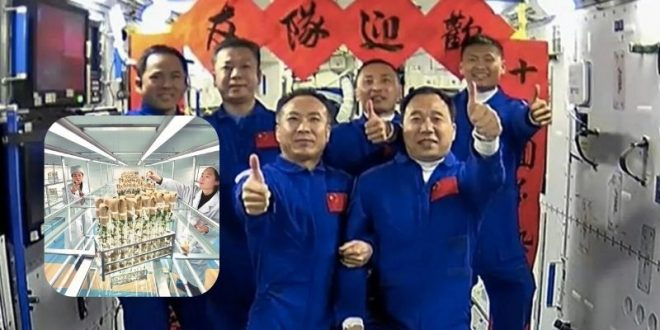#Agriculture #SpaceFarming #PotatoCultivation #GeneticEditing #CRISPR #SpaceMutagenesis #AgriculturalInnovation #CropDevelopment #SustainableFarming #FutureofAgriculture
In a mission that combines space exploration with agricultural advancement, more than 60,000 potato seeds returned to Earth after a five-month journey aboard the Shenzhou XVI. Handed over to the Shangdu Potato Technology Innovation Center in Inner Mongolia, these seeds represent a unique opportunity to revolutionize potato cultivation.
Zhang Linhai, director of the center, highlighted the advantageous climate of the region—abundant arable land, high altitude, cold climate, and minimal pests and diseases. The cultivation process involves laboratory, greenhouse, and field tests. The seeds are expected to sprout in a greenhouse, then move to pots until tubers appear, and finally, they’ll be transferred to the field for further assessment.
Approximately five percent of the plants will undergo additional testing, focusing on crucial factors like yield and disease resistance. What sets this project apart is the application of CRISPR, a precise gene-editing tool, to enhance features such as high salt-alkali tolerance and disease resistance in the resulting potato varieties.
Hu Baigeng, director of the National Engineering Research Center for Potato, emphasized the potential of the space environment to induce genetic mutations, leading to desirable traits like early maturity, high quality, high yield, and disease resistance.
This initiative, known as space mutagenesis or space-induced mutant breeding, involves subjecting seeds to high cosmic ray exposure, along with environmental factors like vacuums, microgravity, and low geomagnetic interference. Since 1987, China has been at the forefront of space breeding studies, successfully cultivating crops like tomatoes, wheat, and rice.
The intersection of space exploration and agriculture holds immense promise for the future of food production. As we witness the cultivation of space-enhanced potato seeds with advanced traits, it becomes clear that innovation knows no bounds. The integration of CRISPR technology and the unique conditions of space create a fertile ground for developing crops with exceptional qualities, ensuring a sustainable and resilient agricultural future.








